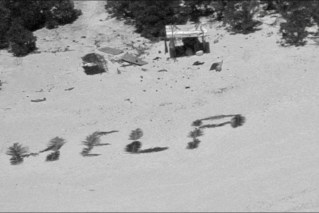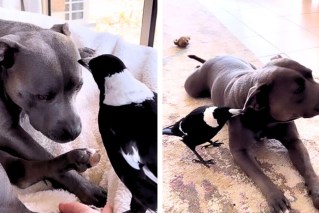April Fools Day cancelled? Yes, if you believe Google


Thanks to social distancing, many office workers will be breathing a sigh of relief they're free from the hazards of April Fools' Day in the workplace. Photo: Getty
April Fools Day is cancelled this year.
That’s if you believe search engine overlord Google, which is apparently hitting pass on the trickery of April 1, thanks to the coronavirus pandemic.
The revelation came via a leaked email from Google’s chief marketing officer Lorraine Twohill, to all staff saying pranks would be put on hold this year as the platform has more important duties – like keeping the searching masses informed on the most relevant COVID-19 information.
Seems legit, but only time will tell.
Usually, April 1 is fraught with danger for the general public and the media.
News outlet inboxes are flooded with ‘clever’ pitches from PR companies, trying to trick over-tired, unwitting journalists into running their brand name in headlines.
Apparently this year, we can just be our gullible selves, no need to be on high alert.
In lieu of any trickery, here’s a round-up of some of the best (and most outlandish) April Fools Day pranks we’ve seen in Australia over the years.
The gBall
It’s a shame Google isn’t (allegedly) participating this year – the company is pretty much the undisputed king of pranks.
About a decade ago, Google announced it was getting involved in the AFL, launching a partnership for the gBall: An AFL ball built-in with the best of Google’s tech, to measure location, accuracy and torque of every kick.
You could download all this data and more, to keep improving your game.
Sounds like every budding Gary Ablett’s dream, right?
Google probably tipped the joke over the edge when it claimed the gBall shared its intel with scouting agents.
If they were interested and wanted to contact the ball owner, the ball would buzz.
That’s mite-y big
National icon Vegemite got us good in 2015, when it announced a Big Vegemite was being erected in Melbourne.
Have you heard? Something BIG is coming to Melbourne in the shape of a 60m tall interactive Vegemite jar. Who's keen? pic.twitter.com/86N7Fsjepo
— Vegemite (@Vegemite) March 31, 2015
What made this prank more memorable was that it caught out pop culture news site pedestrian.tv, which not only ran with the pitch, but broke the embargo to get it out first.
Thankfully they’re a funny bunch, and took it on the chin.
This served as a lesson for media outlets around the country for the next few years.
Generations of tradition
The media of old knew how to prank.
Without the sharp minds of the internet ruining everything with one tweet, news outlets could get hours of mileage out of their April 1 exploits.
ABC program This Day Tonight ran a harmless yet humorous trick in 1975, when it made the declaration Australia would be converting to metric time.
What’s metric time?
According to the program, there would now be 100 seconds per minute, 100 minutes per hour, and 20-hour days.
Seconds were now to be referred to as millidays, minutes centidays and hours decidays.
Then deputy premier of South Australia Des Corcoran gave the report more weight by praising the new time system on the broadcast.
It was topped off by rendered images of the Adelaide town hall displaying a metric time face.
Boom-tish.
Simple, yet effective
Virgin Money Australia proved you don’t have to go all out to get a launch.
In 2005 it announced it was launching scratch ‘n’ sniff credit cards, which Australians could travel with overseas and rub a little nail on when they wanted to be reminded of home.
The cards’ scent was barbecued sausages.
Extremely elaborate
Dick Smith cemented himself in Aussie lore in 1978 with his monumental prank.
For weeks, he’d been advertising that he was going to tow an iceberg all the way from Antarctica into Sydney Harbour.
Why? He’s an entrepreneur.
He was going to park it next to the Opera House and chip off small wedges to passersby, selling them for 10 cents a piece.
The ‘Dicksicles’ would improve the flavour of whatever beverage they were added to.
And lo, April 1 sprung. There was Dick Smith towing his promised iceberg.

Dick Smith’s iceberg came unstuck with the rains.
The public went wild. The press were stirred into a frenzy. And then the heavens opened.
The ‘Dickenberg 1’ began to melt and was revealed for what it really was: A layer of shaving cream and firefighting foam over a structure of plastic sheets.
Dick Smith said afterwards he was pretty happy with the prank – it only cost him $1450 to pull off.










